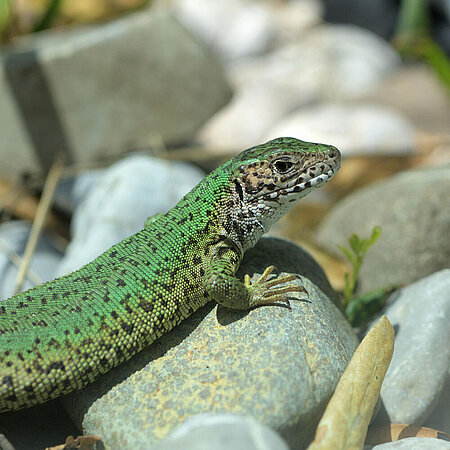Sand lizard
Lacerta agilis

- Family
- Echte Eidechsen (Lacertidae)
- Length
- 20 – 24 cm
- Habitat
- open, sunny woodland edges, parks, heathlands
Fingerprint on the back
The colour pattern of the sand lizard varies depending on gender, age and, in some cases, region. While all sand lizards have a broad, brownish stripe with dark patches and light spots on the back that extends down the tail, the arrangement of the variable white lines and spots on the back of each individual is unique, similar to our fingerprints.
Love tandem
During the mating season, when a male fi nds a female, he will bite into her tail. The two lizards will then run together in this tandem position for a few metres at a moderate pace. This behaviour is called the mating march. During this process, the male will gradually bite his way forward along the female’s body. Once he reaches halfway up her back, mating will begin.
Although the sand lizard is a very hardy animal, the species is becoming increasingly rare due to habitat loss.
Distribution
